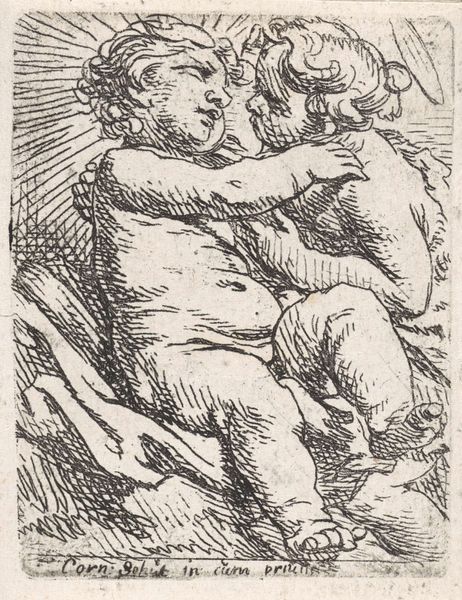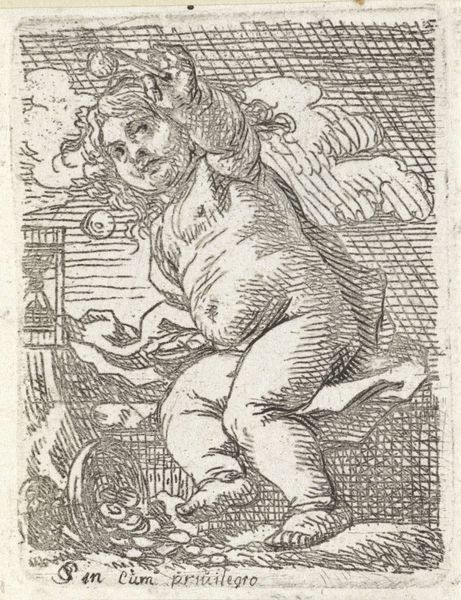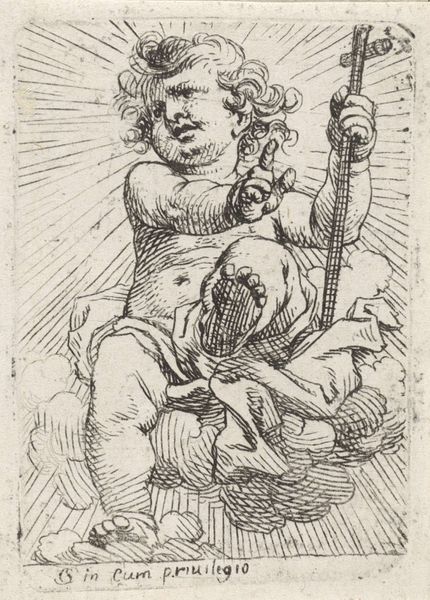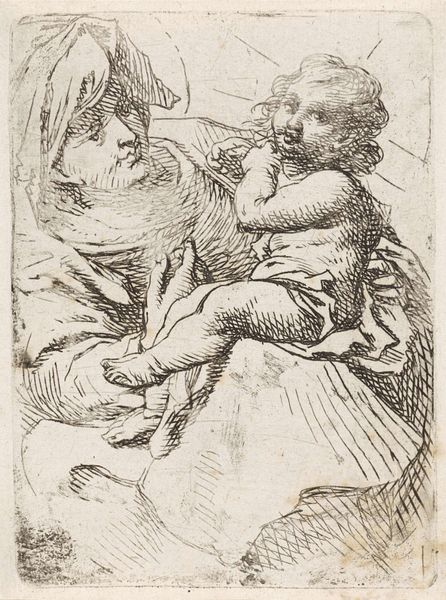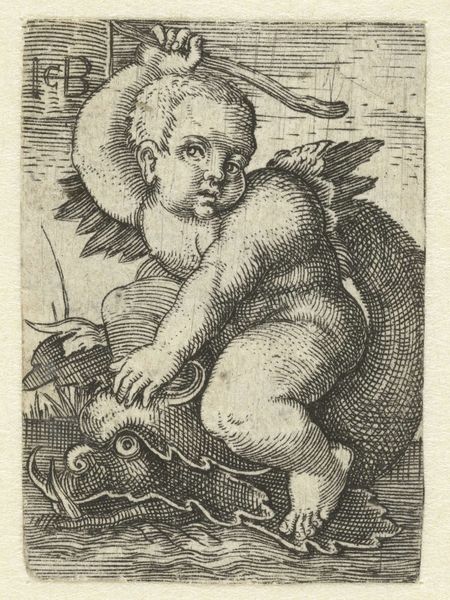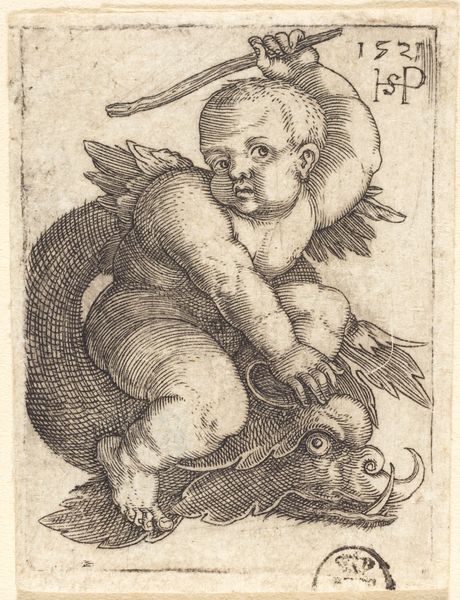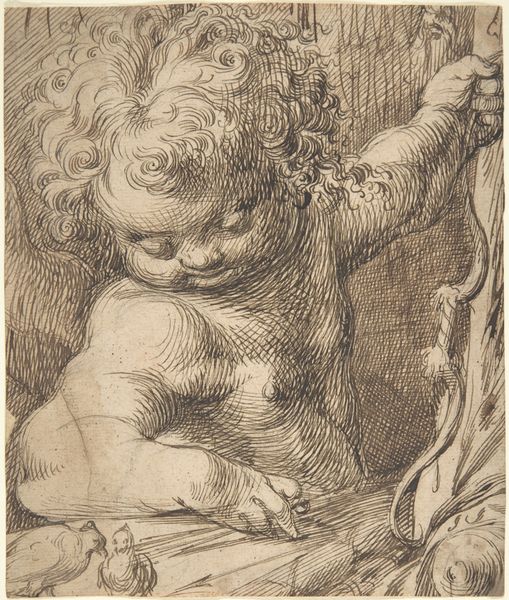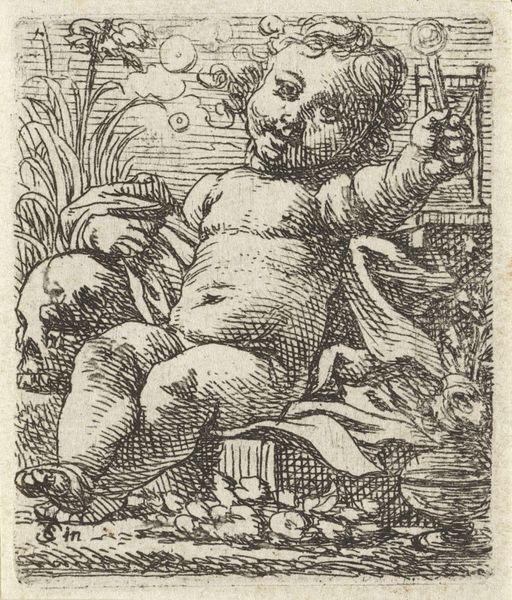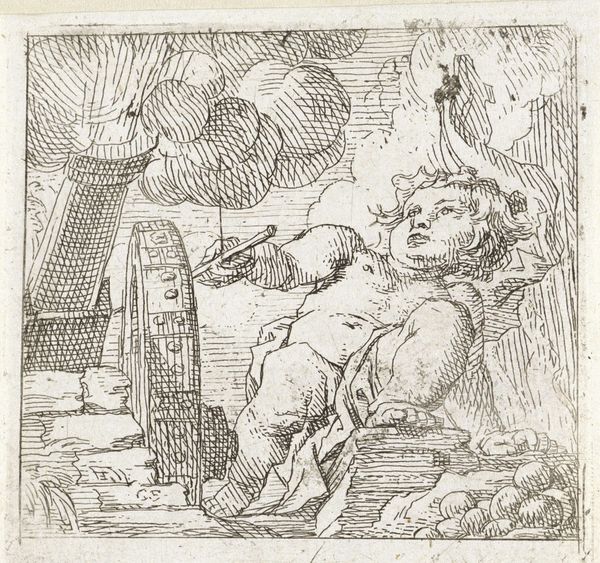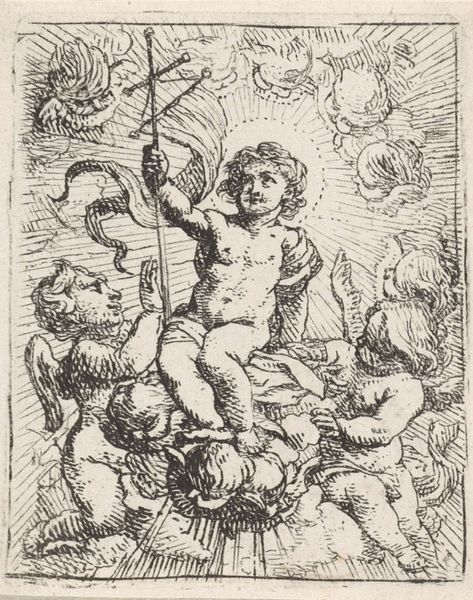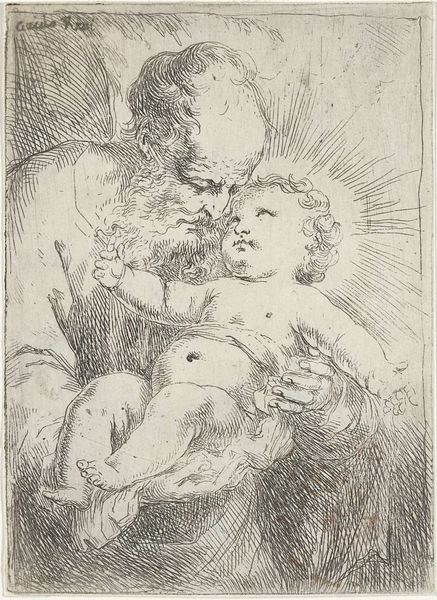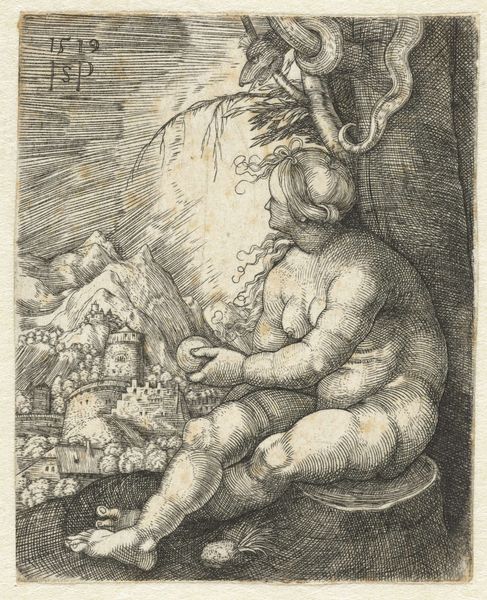
drawing, ink
#
portrait
#
drawing
#
baroque
#
figuration
#
ink
#
history-painting
Dimensions: height 71 mm, width 45 mm
Copyright: Rijks Museum: Open Domain
This tiny etching, made by Cornelis Schut in the 17th century, depicts the Christ Child as Salvator Mundi, or Savior of the World. He is holding a globe, topped with a cross, symbolizing his dominion over the earth. The image speaks to the period's religious and political climate in the Netherlands. Schut worked in Antwerp, which remained Catholic while the Northern Netherlands became Protestant. His art served the Catholic Counter-Reformation, affirming traditional beliefs through emotionally resonant images. This print may have been designed for private devotion, reinforcing the Catholic Church’s universal claims in a time of religious division. The Christ Child's slightly awkward and not idealized appearance could be understood in the context of representing Christ's human nature, and the importance of the divine incarnation in the doctrine of salvation. To understand Schut’s place within this history, we can look to period devotional literature and the records of Antwerp's artistic institutions. Examining the social conditions that shaped the production and reception of such images helps us understand the ongoing power of art.
Comments
No comments
Be the first to comment and join the conversation on the ultimate creative platform.
